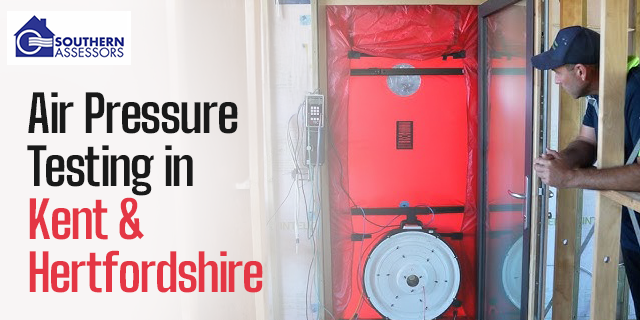Air pressure testing is an important step in ensuring buildings meet UK Building Regulations, particularly L1A and L2A, with a focus on energy efficiency. This test measures the airtightness of structures to identify where air can escape and lead to energy waste. Kent and Hertfordshire regions have growing construction activity and thus have increased demands for air pressure testing. This article discusses the process and its importance.
What is Air Pressure Testing?
Also known as an air tightness test, air pressure testing is, in simple terms, a test done to determine a building’s airtightness. It measures how well a building can retain heat or cool air. The main reason behind this test is to reduce the amount of energy that could be wasted, which would make it more expensive to run because the air passes freely in buildings.
Why is Air Pressure Testing Important?
- Energy efficiency: The test identifies areas in the building with high chances of air leaks, such as improperly sealed windows, doors, or cracks in the wall. By sealing leaks, heat loss can be reduced, resulting in substantial savings on heating and cooling bills.
- Environmental Benefits: With the consciousness of project green, air tightness testing UK is a step in the right direction because lower energy consumption equals reduced carbon emissions, and it aligns with sustainability goals. This aligns with the UK’s goal to reduce greenhouse gas emissions, as their target is net zero emissions by 2050.
- Regulatory Compliance: The UK Building regulations mandate air pressure testing for new buildings to ensure they meet minimum energy standards. Noncompliance may lead to a delay in project approval and legal consequences for developers.
- Better Comfort: When air leaks occur, they cause uneven temperatures and discomfort for the building occupants. Carrying out the test and fixing the issues helps the occupants feel more comfortable indoors.
Air Pressure Test Preparation
The following steps help ensure that the process runs smoothly. Double-checking these helps ensure that your building does not fail. Here’s the checklist:
- Double-check all windows and doors.
- Watch out for small openings around light sockets.
- Gaps around pipes are another common area for leaks.
- Check behind kitchen units and baths and seal the spaces.
- Gaps where a wall and a floor join.
- You should have a standard door.
- Systems designed for ventilation are to be taped off.
Understanding the Process
Ideally, tests are conducted under stable weather conditions because strong winds can influence the result. After the preparation phase, the test begins with the setting up of a specialised instrument. A blower door system made of a large fan and pressure sensors is installed in the main external door.
The equipment will create controlled pressure differences within the building to imitate real-life conditions. The fan would either pressurise or depressurise the building, pushing and pulling air through any gaps. The sensor would measure the rate at which the leakage is occurring.
The testing process often involves multiple cycles at different pressure levels to ensure the result is reliable. After the test, the data is analysed to give a comprehensive report. In instances where the building does not pass the air pressure testing building regulations test, the report would include recommendations for improvements.
Conclusion
Air pressure testing is important because it keeps your building compliant with the regulations and reduces energy waste. Are you in need of premium energy consultants for air pressure testing? Connect with Southern Assessors today.


